Soft yet sophisticated, duck egg blue has emerged as the go-to bedroom hue for anyone craving a cloud-light retreat. Design editors praise the tint’s delicate mix of blue and green for lowering visual “noise” and helping the nervous system unwind, especially when teamed with tactile naturals and warm neutrals. Because the shade straddles cool and warm palettes, it slips into modern minimal, coastal, country or vintage rooms, letting you refresh existing pieces instead of starting from scratch. Dive into these twenty ideas and discover how duck egg blue can anchor everything from headboards to hardware while keeping your bedroom effortlessly serene.
1. Duck Egg Blue Feature Wall for Instant Calm

A well-placed feature wall in duck egg blue delivers instant tranquillity and a subtle sense of depth without overpowering the room. Painters recommend coating the wall behind your headboard so the hue acts like a calming halo when you lie down, while the remaining walls stay neutral for contrast. Because the colour carries gentle grey undertones, it rarely clashes with floors or trim, letting you skip the heavy prep often required for bolder pigments. Finish the wall with a simple artwork or cane headboard to add texture and prevent the scheme feeling flat—both elements pop beautifully against the soft blue-green backdrop.
2. Crisp White Textiles to Highlight Duck Egg Blue

Consider how hotel bedding looks against pale lagoon walls: bright white linens sharpen duck egg blue and make small rooms feel larger. Designers note that pure or off-white fabrics bounce daylight onto coloured surfaces, amplifying the restful tint without adding visual clutter. Layer pique cotton, waffle blankets and lightly fringed throws so the palette stays inviting instead of clinical. A snowy matelassé coverlet or fresh euro shams cost little yet instantly modernise a rental space where you can’t repaint, proving soft goods are the fastest path to a crisper blue bedroom.
3. Warm Natural Wood Balancing Act

Unlike many pastels, duck egg blue thrives when partnered with honest timber. Mid-tone oak nightstands, a rattan bench or reclaimed pine flooring temper the shade’s coolness and keep the bedroom grounded. Wood grain injects subtle pattern, breaking up broad swaths of paint without demanding extra colours. If you favour Scandinavian style, simply oil existing furniture for a raw finish; the muted blue then takes on a coastal, sun-washed attitude. Where budget allows, fit slim batten headboards in birch plywood—its pale honey undertone flatters the green note in duck egg and ages gracefully.
4. Metallic Accents in Brass and Gold
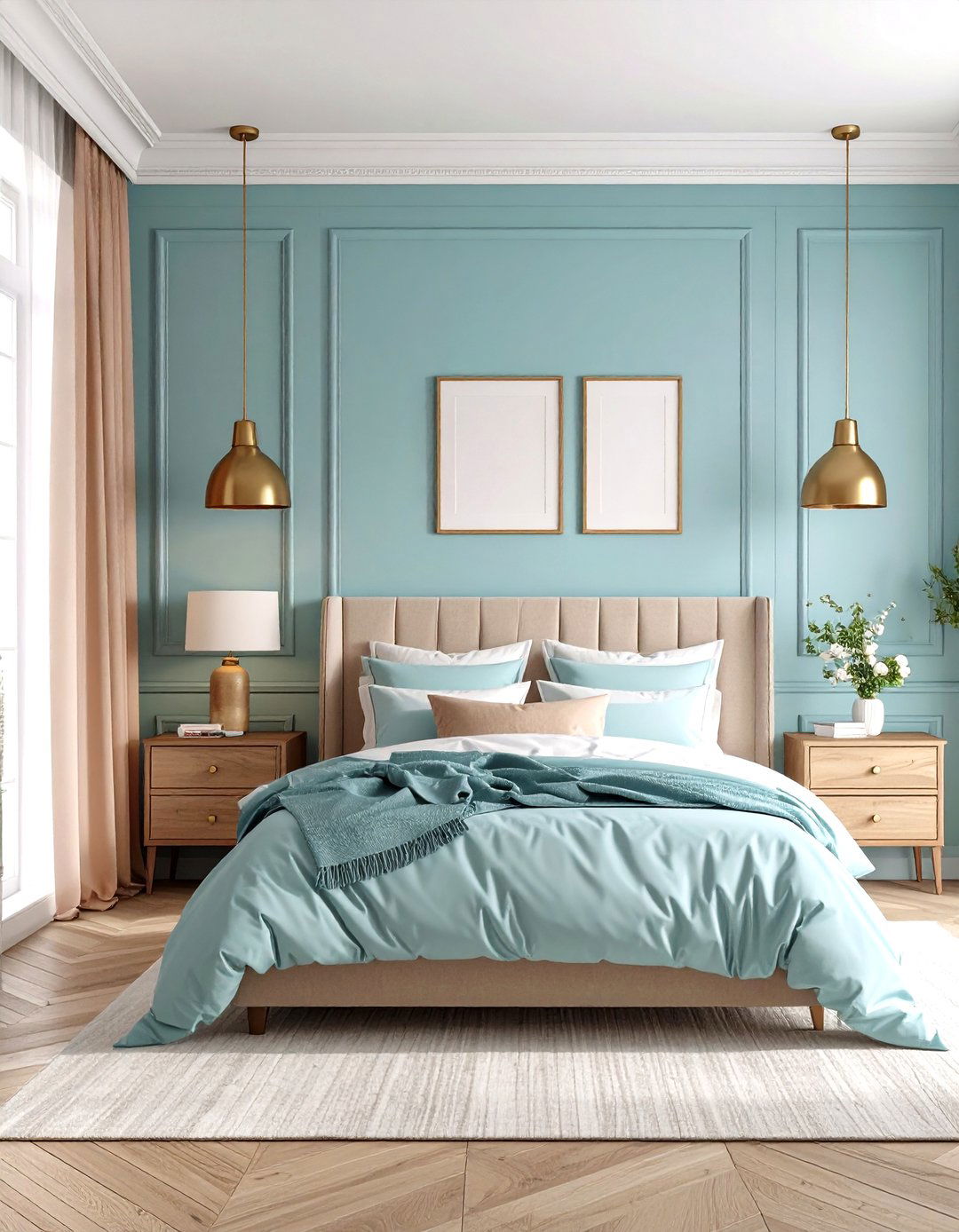
Shimmering metals elevate duck egg blue from casual to boutique-hotel chic. Small doses of brushed brass—think pendant lights, picture frames or sleek wardrobe handles—pick up the shade’s warmth and bounce golden highlights around the room. Because the wall colour is low-saturation, statement metallic pieces never look garish; instead, they read like jewellery. Repeat the finish sparingly—perhaps a ceiling light, two sconces and a mirror edge—to keep cohesion. The resulting sparkle tricks the eye into perceiving the bedroom as brighter and more luxurious without overwhelming the serenity of the blue backdrop.
5. Gentle Dove Grey Layers

As a halfway tone between blue and charcoal, soft dove grey melts effortlessly into a duck egg blue scheme, deepening the palette without darkening the mood. Use grey upholstered headboards, linen drapes or knit throws to add tonal variation in spaces that lack architectural detail. The two hues share calming undertones, so you can stack multiple textures—bouclé, velvet, brushed cotton—without visual clutter. Grey’s resilience to everyday wear makes it ideal for ottomans in pet-friendly rooms, while a single charcoal sketch adds subtle focus and prevents the look from drifting into monotone.
6. Botanical Prints for Breezy Energy

Botanicals breathe life into duck egg blue yet retain its softness because leafy greens and muted petal tones sit comfortably beside the hue on the colour wheel. A wallpaper panel of trailing vines behind the bed or a pair of fern-print cushions introduces gentle pattern while referencing nature—the shade’s original inspiration. Keep motifs loose and water-coloured to avoid overwhelm, and repeat one tone from the print—perhaps sage or blush—in a bedside vase. This deliberate echo links walls, textiles and décor, creating a space that feels curated rather than themed.
7. Mustard Yellow Pops for Cheer
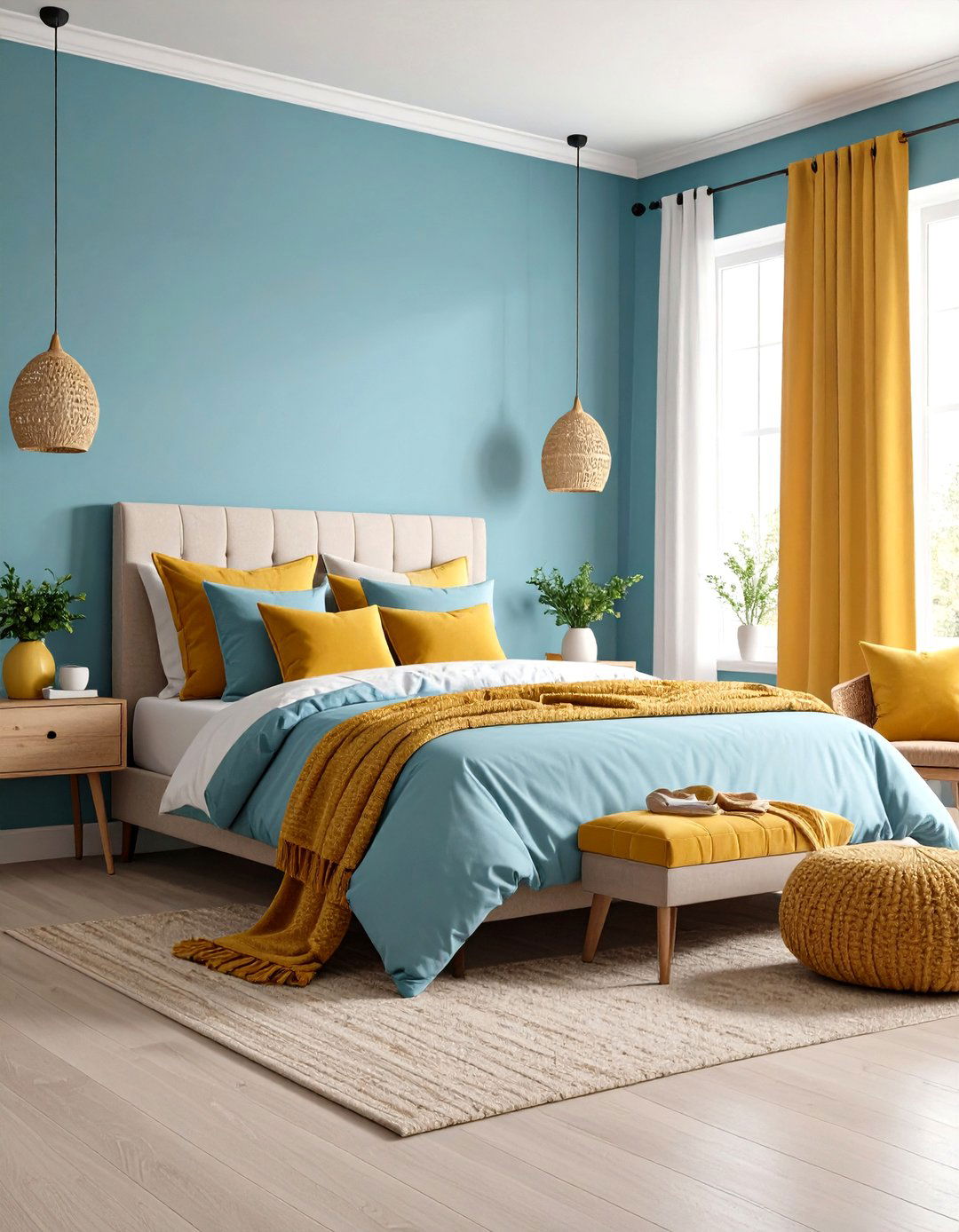
Surprisingly, duck egg blue can carry a hit of sunshine when teamed with mustard accessories. Designers increasingly add an ochre velvet cushion or woven throw to wake up a pastel backdrop without sacrificing calm. Warm yellow emphasises the green undertone in the blue, forming a sophisticated complementary pair. Maintain an 80 : 15 : 5 ratio of blue, white and yellow so the accent remains a joyful exclamation mark. Swappable soft furnishings let you dial vibrancy up for summer then tone it down again come winter, keeping the colour story flexible.
8. Monochrome Textured Bedding
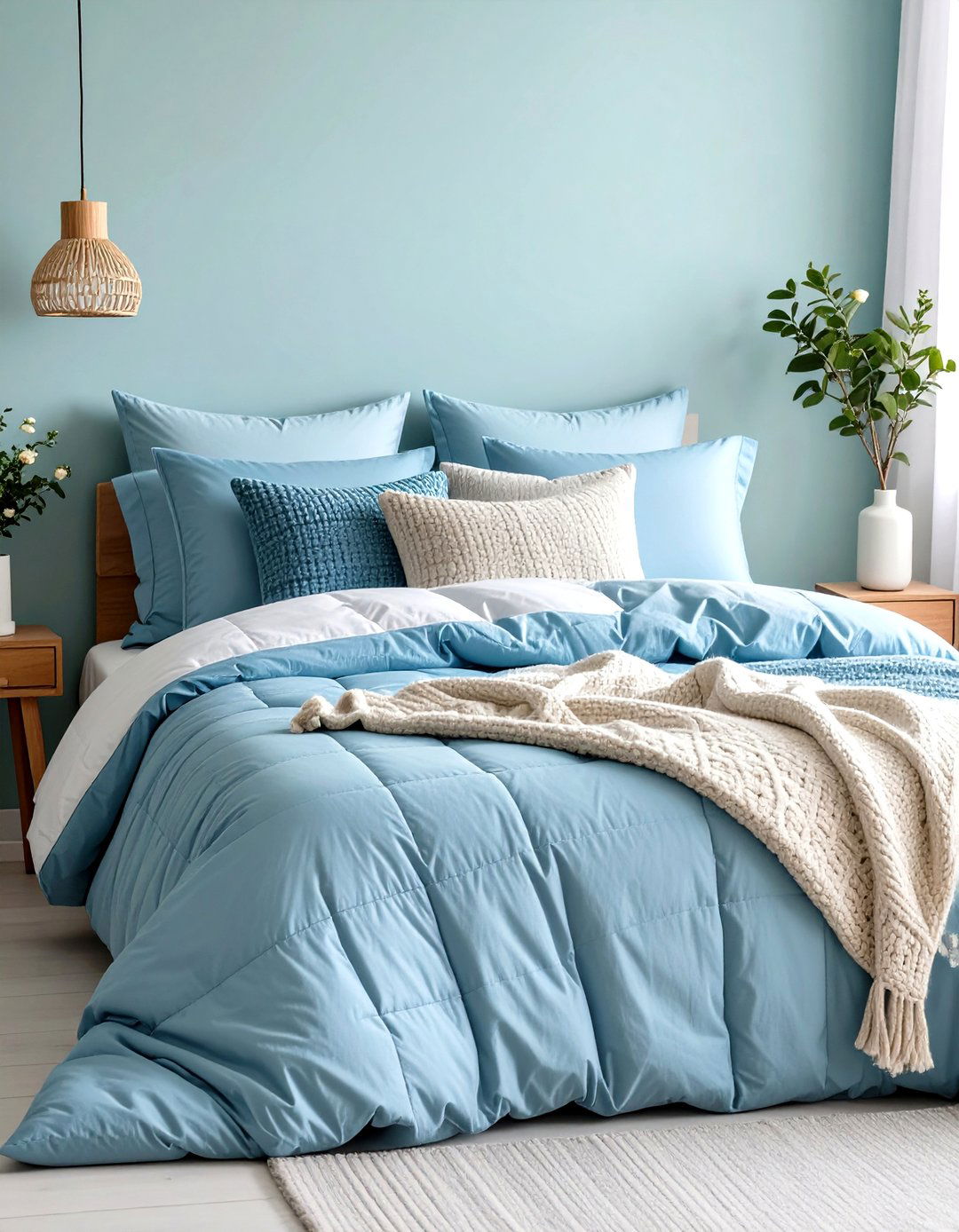
With duck egg blue, sometimes the most soothing statement is monochrome. Stick to the hue across quilted coverlets, linen shams and knitted cushions, but vary weave and finish to avoid flatness. Channel-stitch quilts catch light differently from waffle pillows, adding depth even within a tight palette. Ground the look with a stone-washed throw a shade deeper at the foot of the bed; the subtle ombré effect stops the scheme floating away. Monochrome layering is especially useful in studio apartments where a cohesive colour story tricks the brain into sensing order and spaciousness.
9. Coastal Retreat with Woven Rattan
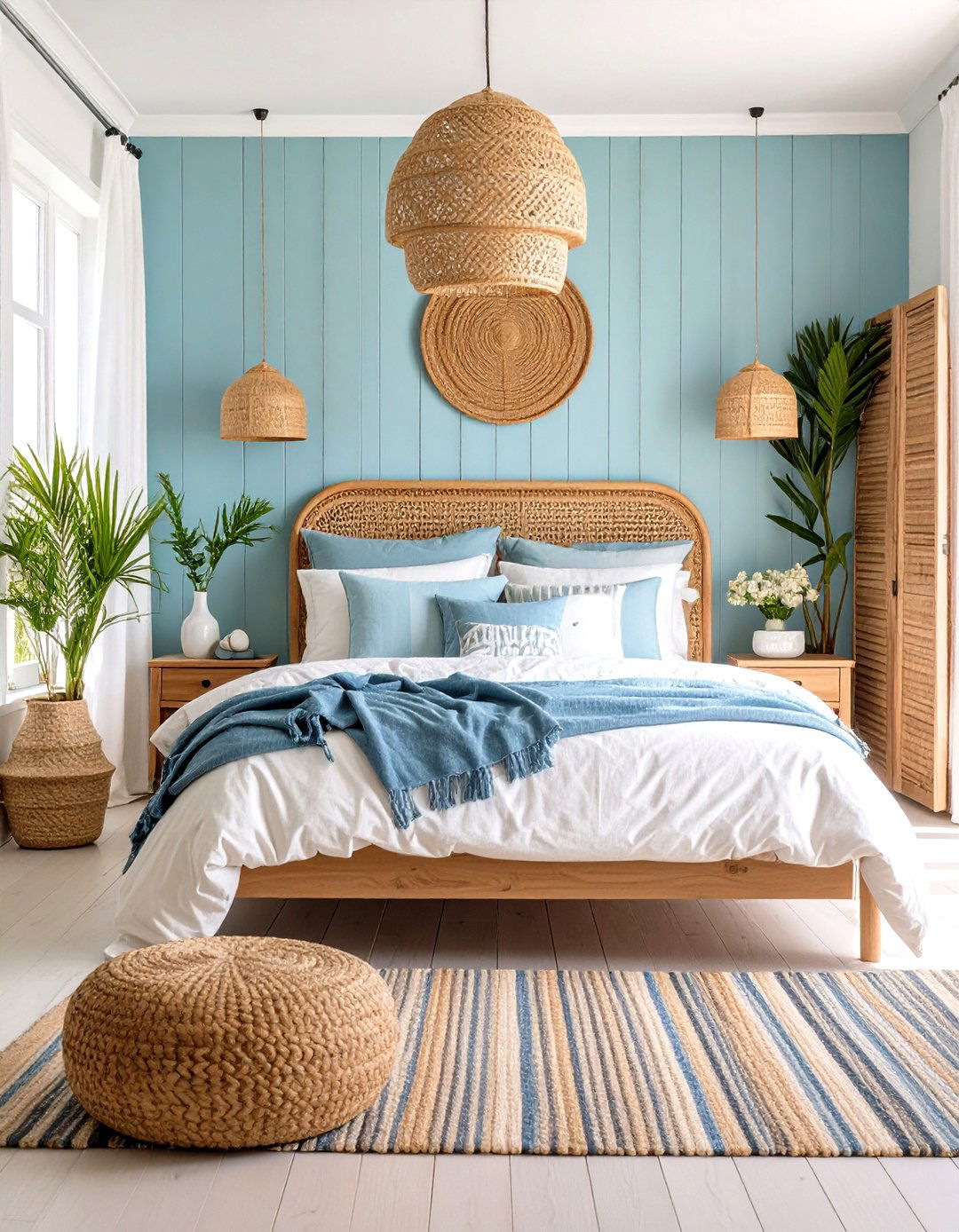
By pairing duck egg blue with tactile rattan, sisal and chalky stripes, you can summon instant coastal calm. Natural fibres evoke driftwood and dune grass, mellowing the cool paint and reinforcing the shade’s oceanic heritage. Try a woven pendant or seagrass nightstand; their honeyed tones warm the palette. Add one narrow nautical stripe—perhaps on a cushion—to supply rhythm, but limit extra colours to white and sand so the room feels grown-up, not theme-park. A small jar of collected shells or a framed beach sketch finishes the story without clutter.
10. Vintage Floral Touches
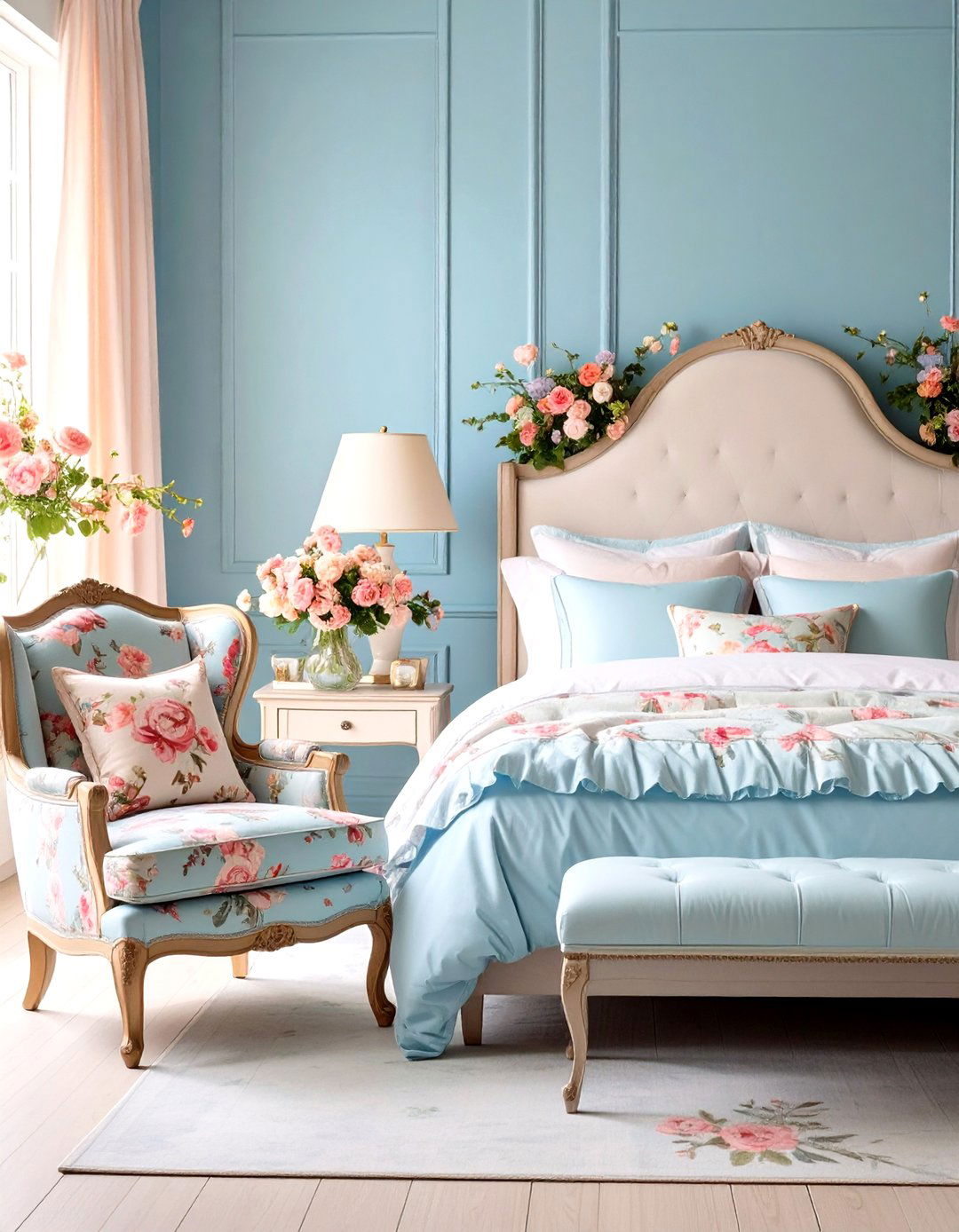
A sprinkle of vintage florals turns a duck egg blue bedroom into a romantic haven. Upholster an antique chair in eau-de-Nil chintz or layer the bed with ruffled pillowcases trimmed in tiny blooms. The delicate background keeps flowers from looking saccharine, evoking gentle country-house charm instead. Balance nostalgia with streamlined furniture or a modern wall lamp to avoid pastiche. A small oval gilt mirror above the bedside adds patina and catches evening light, echoing the metallic warmth introduced elsewhere and tying the scheme together with subtle sparkle.
11. Blush Pink Accents for Soft Contrast
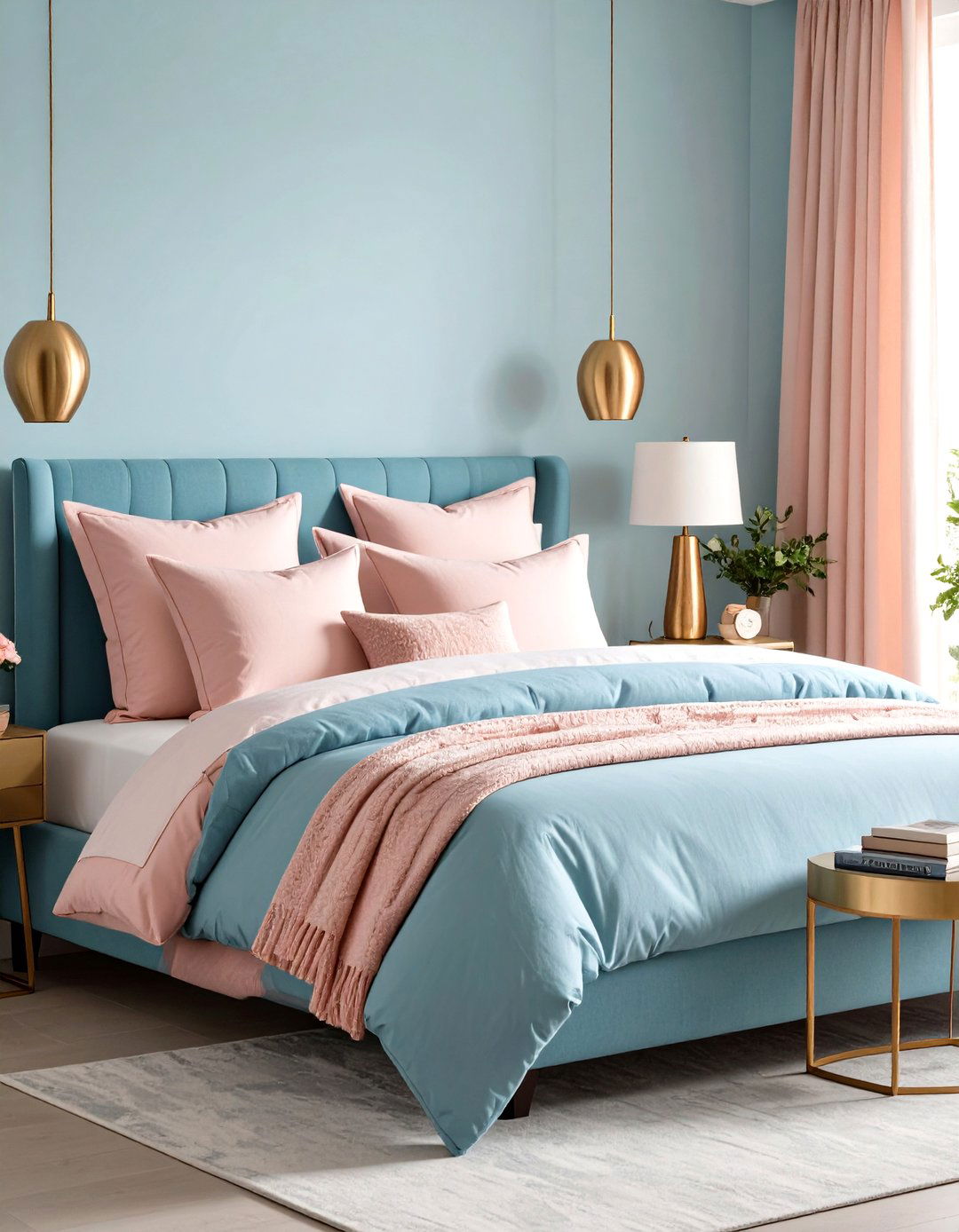
Blush pink speaks the same gentle language as duck egg blue, offering a whisper of contrast without disrupting serenity. Swap one pillow pair for rosy washed-cotton or drape a blush mohair throw over a bench; the warmth lifts the palette in north-facing rooms where blue can feel cool. Complement with rose-gold lamp bases or brushed copper knobs for cohesion. Finish with an abstract print that unites pink, blue and white, anchoring the wall above the headboard and ensuring the accent feels intentional, not accidental.
12. Charcoal Contrasts for Modern Drama
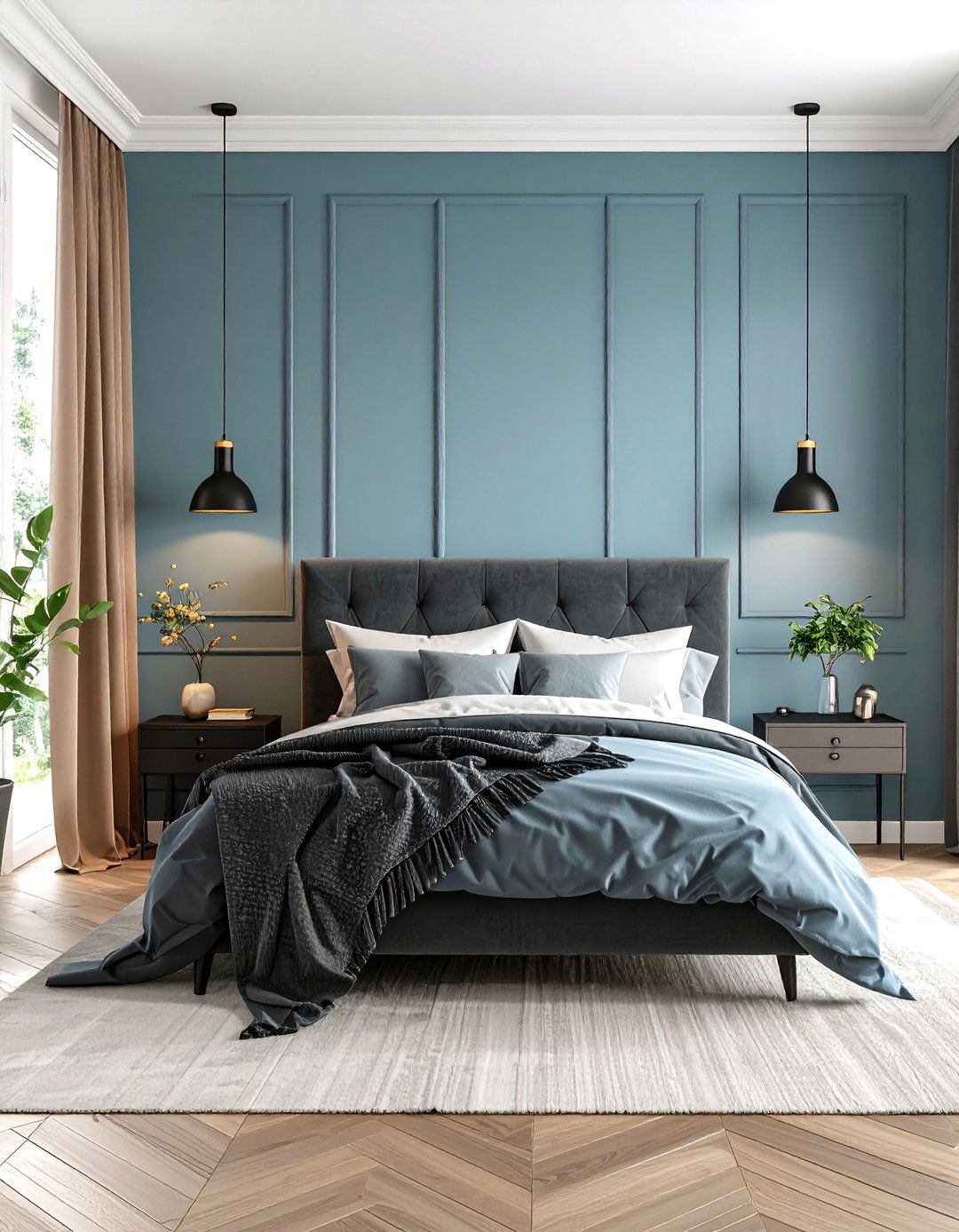
Although airy schemes dominate, duck egg blue also thrives alongside charcoal accents. Introduce graphite nightstands, a deep grey throw or black-metal light fittings to carve crisp shadow lines against pastel walls. The darker anchors sharpen architecture and give the colour contemporary confidence—ideal for those moving away from shabby-chic looks. Maintain a 70 : 30 ratio of light to dark so the room remains restful. A single monochrome artwork framed in white echoes the accent and pulls the palette together without stealing focus.
13. Pattern Play with Stripes and Checks
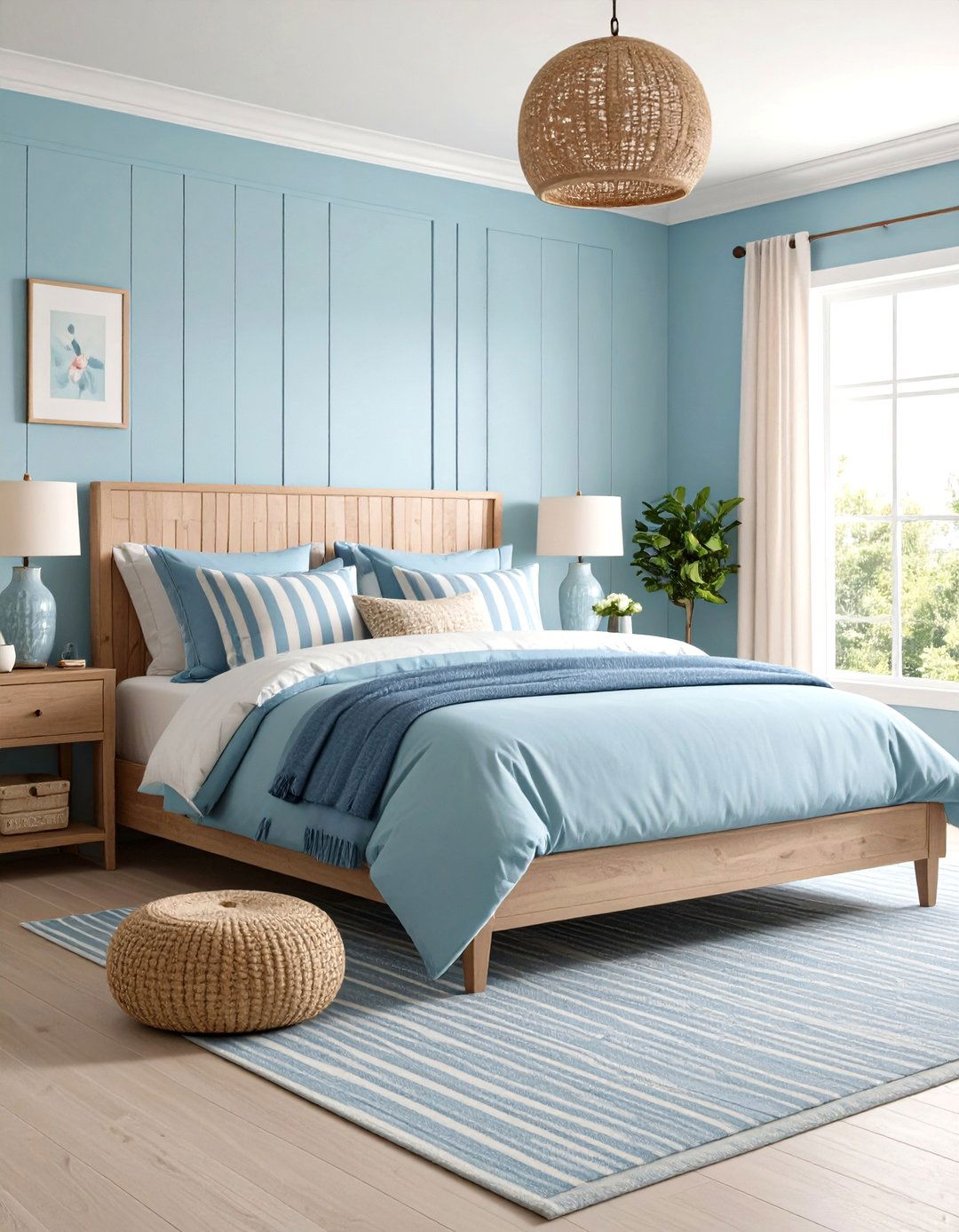
Slim ticking stripes or gingham checks in duck egg and white add rhythm while respecting the room’s calm DNA. Alternate patterns across soft furnishings—checked euro shams, striped lumbar pillow—so the eye dances gently from one surface to another. Because the colour story remains narrow, you can mix three or four prints without visual chaos. This layered approach feels especially welcoming in guest rooms and photographs beautifully for rental listings, proving pattern can be subtle yet effective.
14. Sustainable Linen and Bamboo Textures

Textured natural fibres amplify duck egg blue’s restorative quality by appealing to multiple senses. Stone-washed linen sheets, bamboo blinds or an unbleached jute rug scatter light and complement the hue’s misty undertone. These breathable materials regulate temperature, helping you sleep cooler in summer and warmer in winter. Their earthy neutrals hint at eco-conscious living and age gracefully alongside this timeless shade. Treat spills with mild soap—most plant-based textiles withstand regular laundering—so maintenance stays as relaxed as the palette itself.
15. Statement Pendant Lighting

To elevate the ceiling—often a forgotten plane—install a sculptural pendant that echoes or complements duck egg blue. A hand-painted metal shade with a brass interior casts a warm pool over the bed while mirroring wall colour in its exterior finish. Fit a dimmer to glide from bright morning zest to low evening glow, reinforcing circadian rhythms. Even in rooms with modest height, a shallow drum shade bordered with blue piping ties the scheme together, turning practical lighting into a subtle style signature.
16. Classic Wall Paneling in Duck Egg
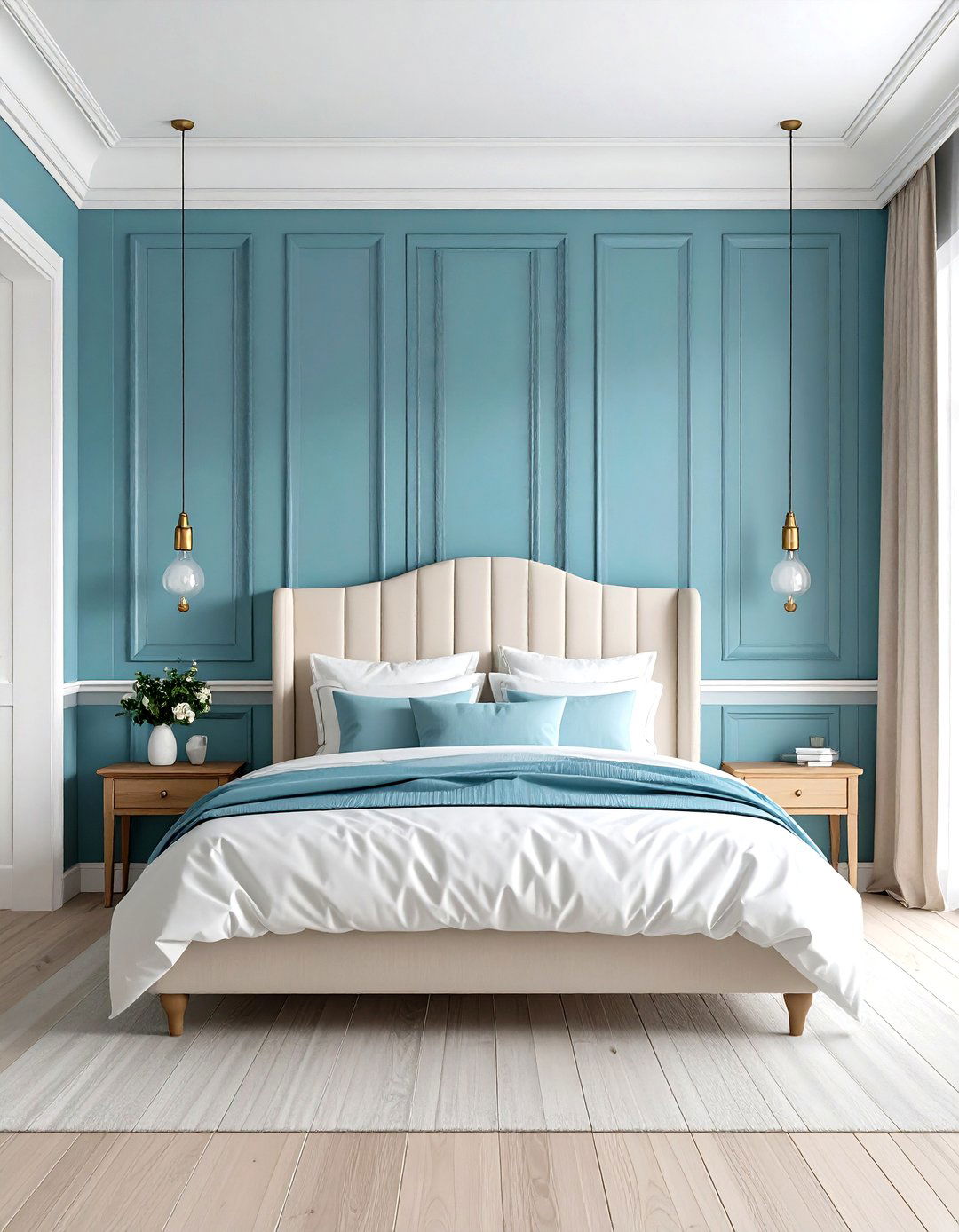
Paneling painted duck egg blue adds architectural depth without heavy colour. Shaker grooves catch daylight, creating gentle shadows that shift as the sun moves. The forgiving hue means minor brush marks read as charming texture, making DIY installation achievable. Pair panels with a crisp white picture rail for traditional impact, or run them floor-to-ceiling for a contemporary cocoon. Beyond looks, paneling shields lower walls from scuffs—handy in children’s rooms—and offers a tactile backdrop for slim upholstered headboards in matching tones.
17. Marble and Stone Accents
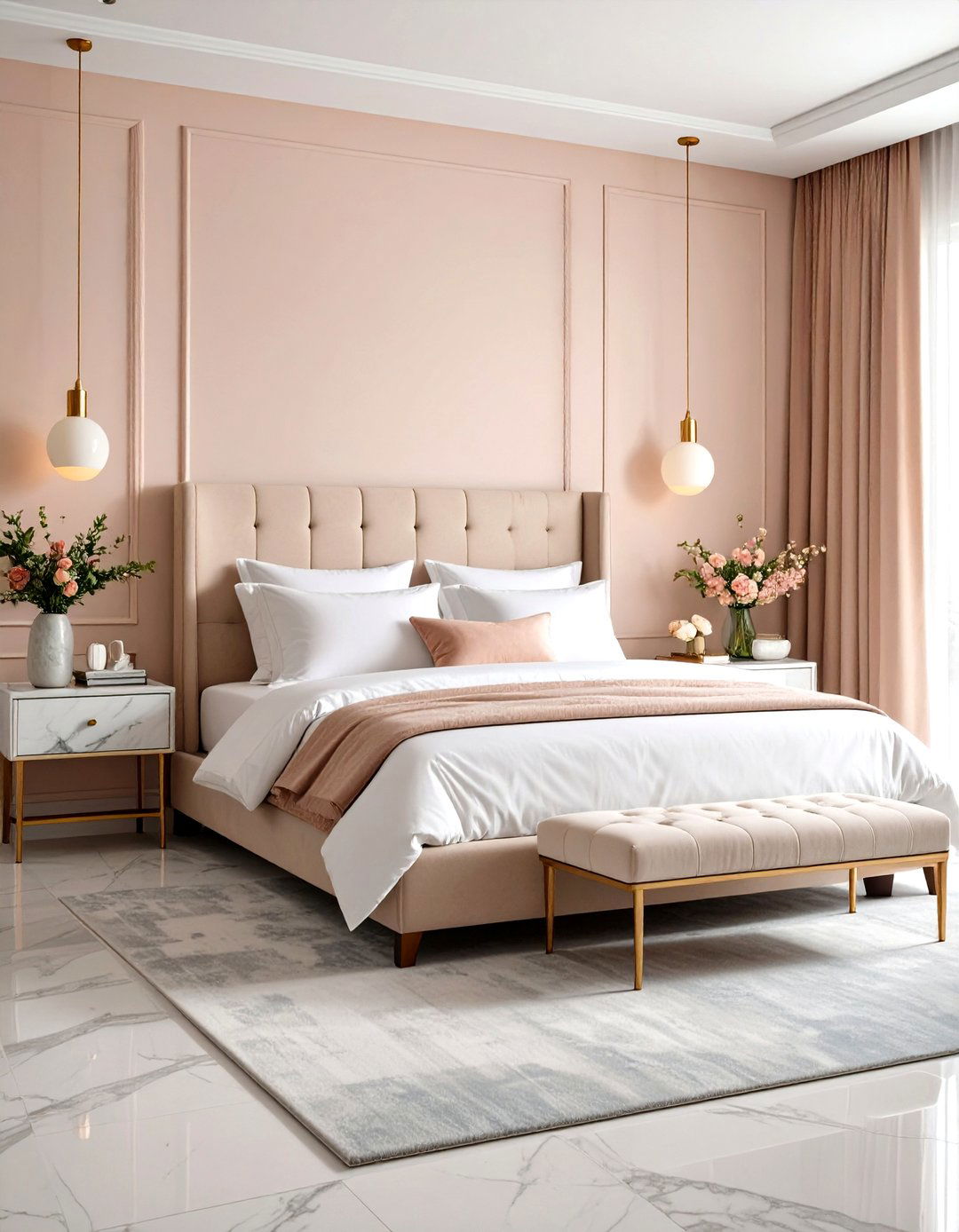
Marble nightstands or a stone tray introduce understated luxury without adding new colours. Veining supplies organic pattern, and light Carrara with grey-blue streaks subtly mirrors surrounding walls. Stone’s thermal mass keeps water glasses cool—an underrated practical bonus—while repeating the material in a candle holder or drawer knob establishes rhythm. Two or three stone touches are plenty; the goal is elegant restraint that highlights, rather than competes with, duck egg blue’s tranquil character.
18. Seasonal Switch with Throws and Pillows
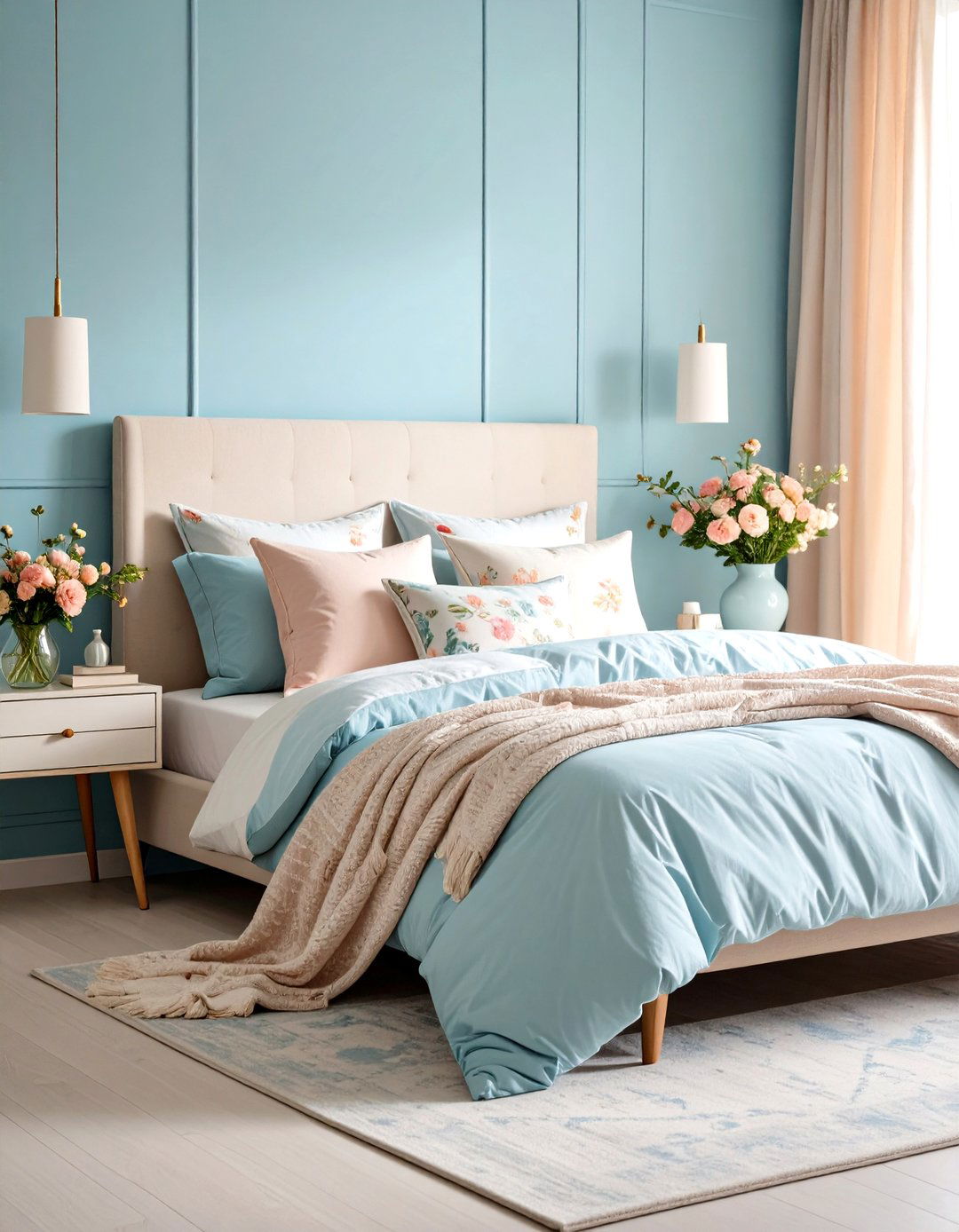
With a stable duck egg blue backdrop, lightweight accessories keep your bedroom fresh year-round. In spring, swap heavy knits for gauzy cotton throws and soft floral cushions; winter welcomes chunky wool blankets and deeper teal pillows. Because the foundation stays constant, each swap feels intentional, avoiding décor fatigue. Store off-season textiles in fabric cubes under the bed to save space and preserve fibres. This rotation spreads costs across the year and lets you enjoy subtle reinvention without repainting.
19. Serene Duck Egg Blue Nursery
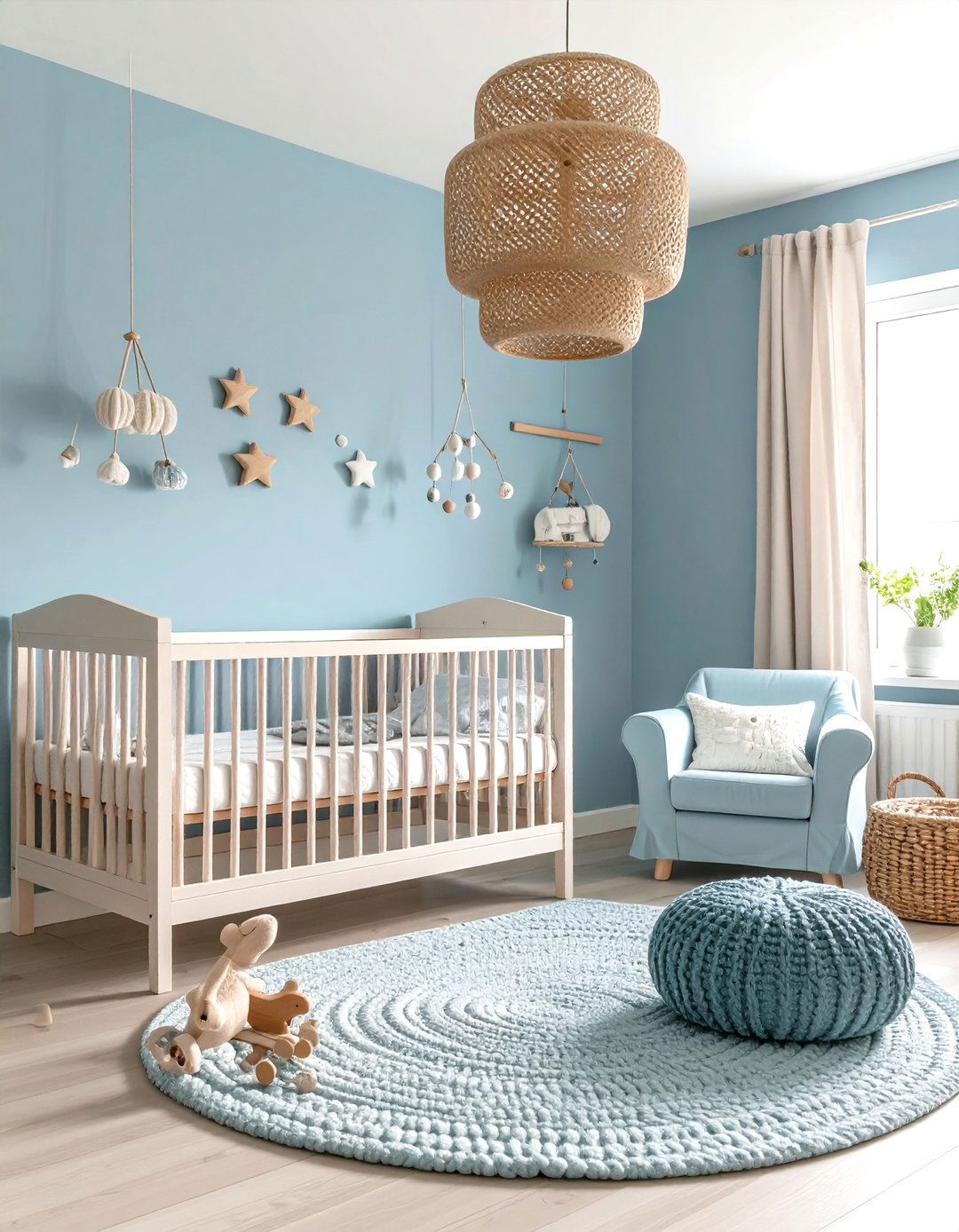
Duck egg blue is popular in nurseries because studies show soft blues can lower heart rate and anxiety—benefits prized by babies and weary parents alike. Coat walls in wipeable matt emulsion, then add tactile distractions such as knitted mobiles, linen canopies and natural-wood toys. Avoid busy prints; the aim is gentle stimulation. A comfortable armchair slip-covered in the same hue keeps the palette seamless and offers a dedicated feeding spot. As your child grows, simply swap artwork and bedding to evolve the room without fresh paint.
20. Light-Reflective Finishes for Small Rooms
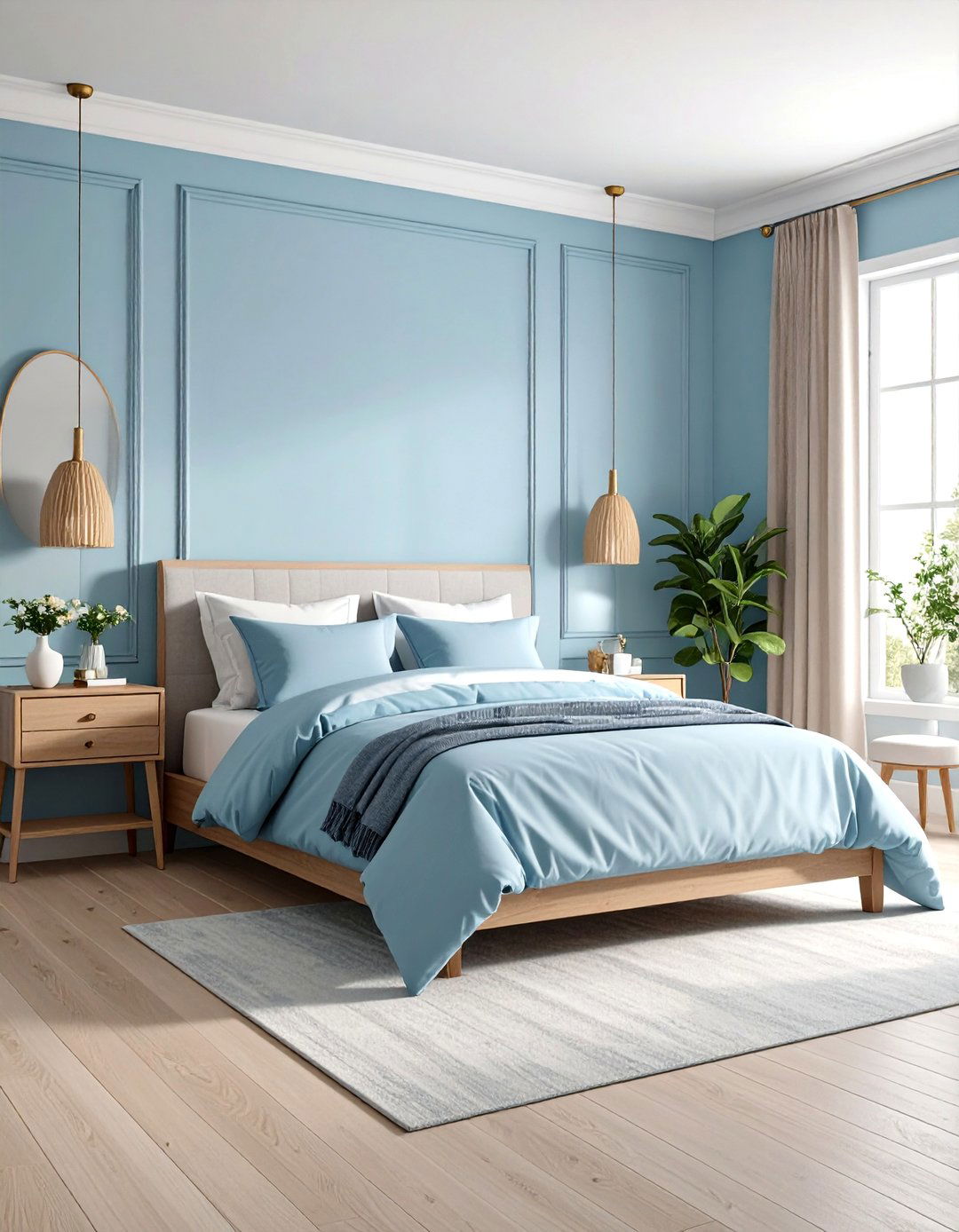
In compact bedrooms, increase perceived space by choosing satin or eggshell finishes that bounce light gently across duck egg blue walls. Designers favour misty blues like Windy Sky or Light Blue for their almost-translucent daytime glow and cosy evening tone. Complement the sheen with mirrors framed in matching blue or soft white, echoing hotel tricks that double views. Keep furniture legs slim and flooring pale so light can skim under beds and dressers, making the room feel larger without sacrificing tranquillity.
Conclusion:
Few colours work as hard as duck egg blue: it calms, adapts and flatters almost every material, from raw timber to polished marble. Whether you paint a single panel or drench the whole room, small budget-friendly tweaks—a mustard cushion, brass switch plate or linen sheet set—can shift the mood with ease. Let this versatile hue headline your next bedroom project and enjoy the quiet confidence of a space that feels perpetually composed.


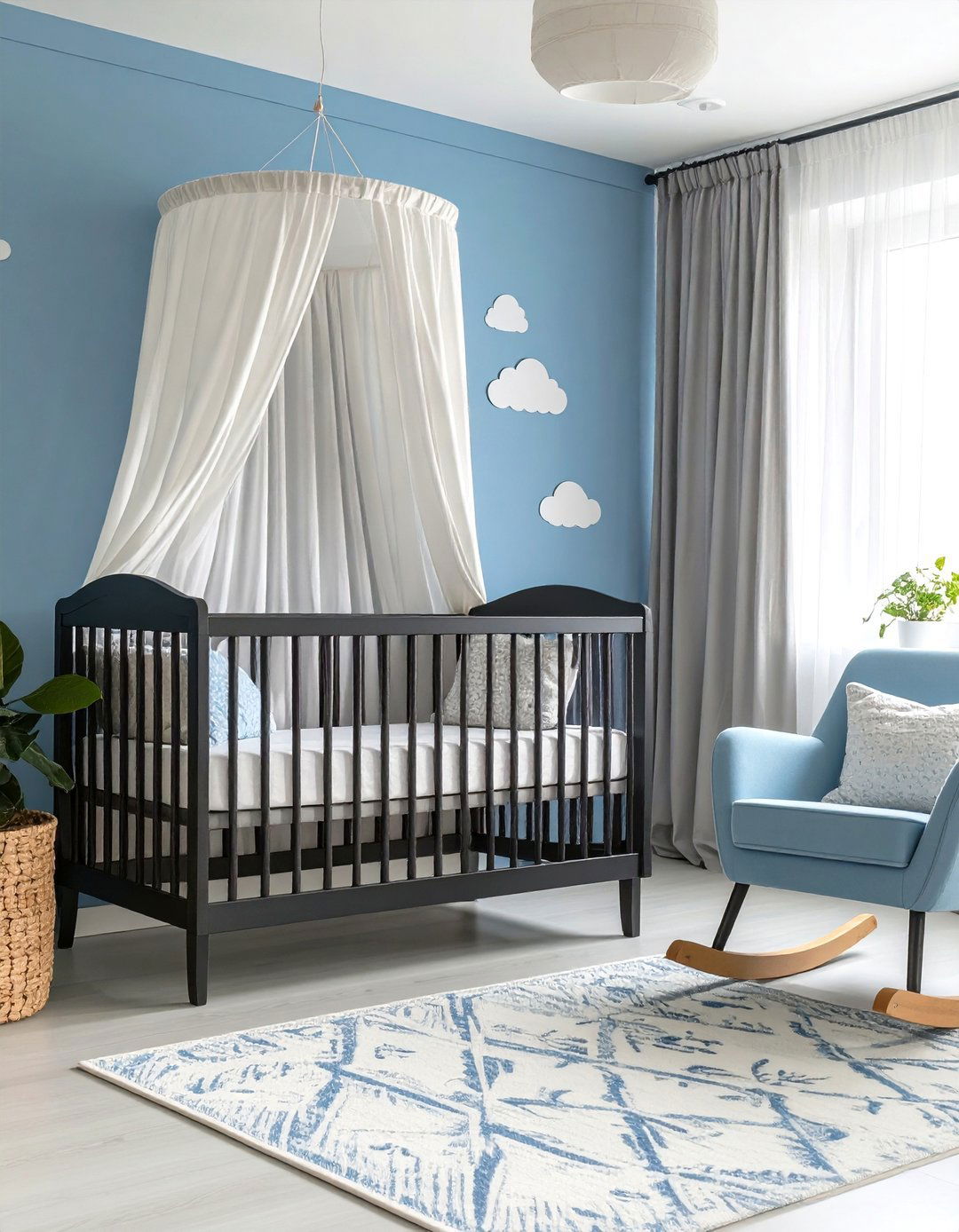

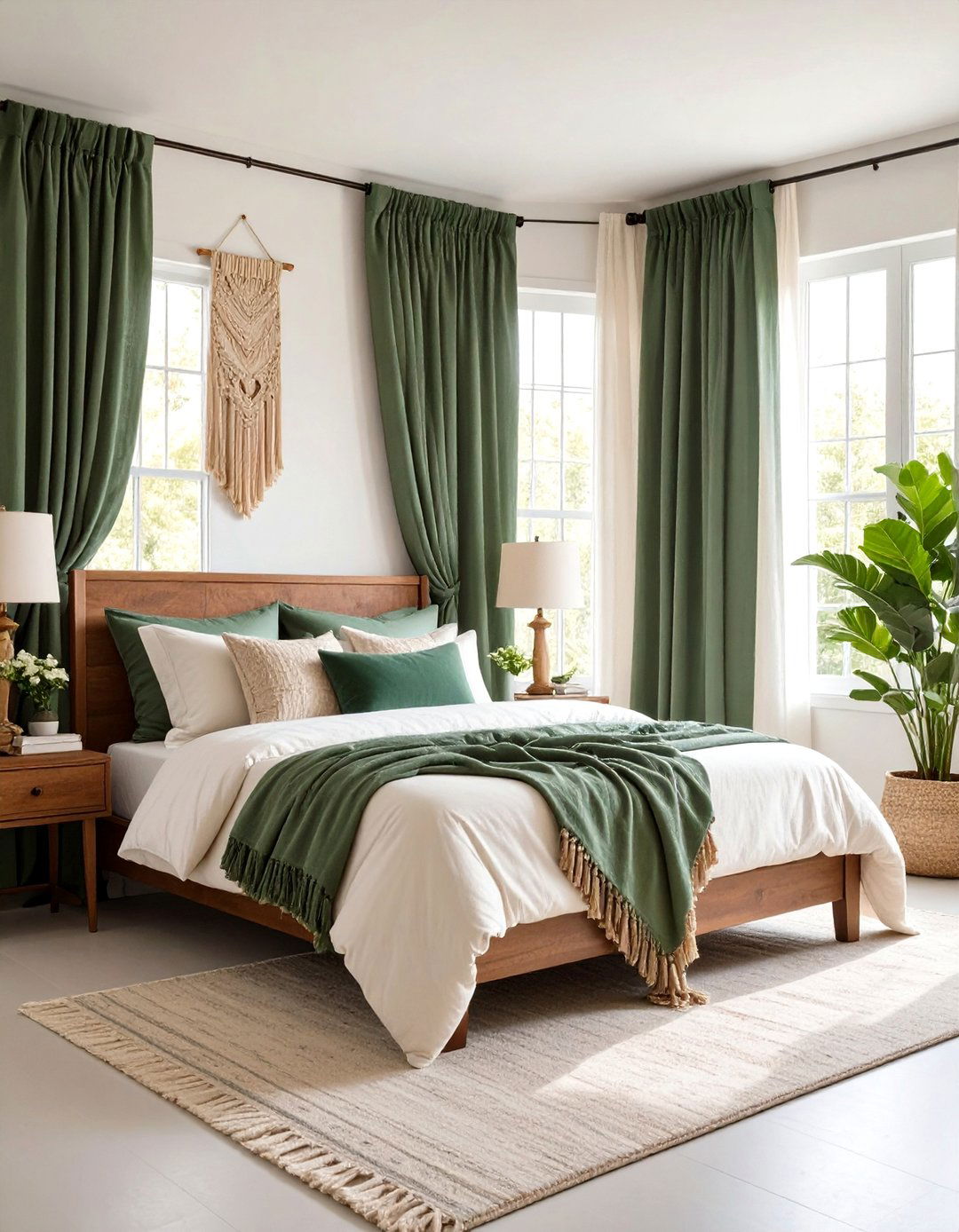

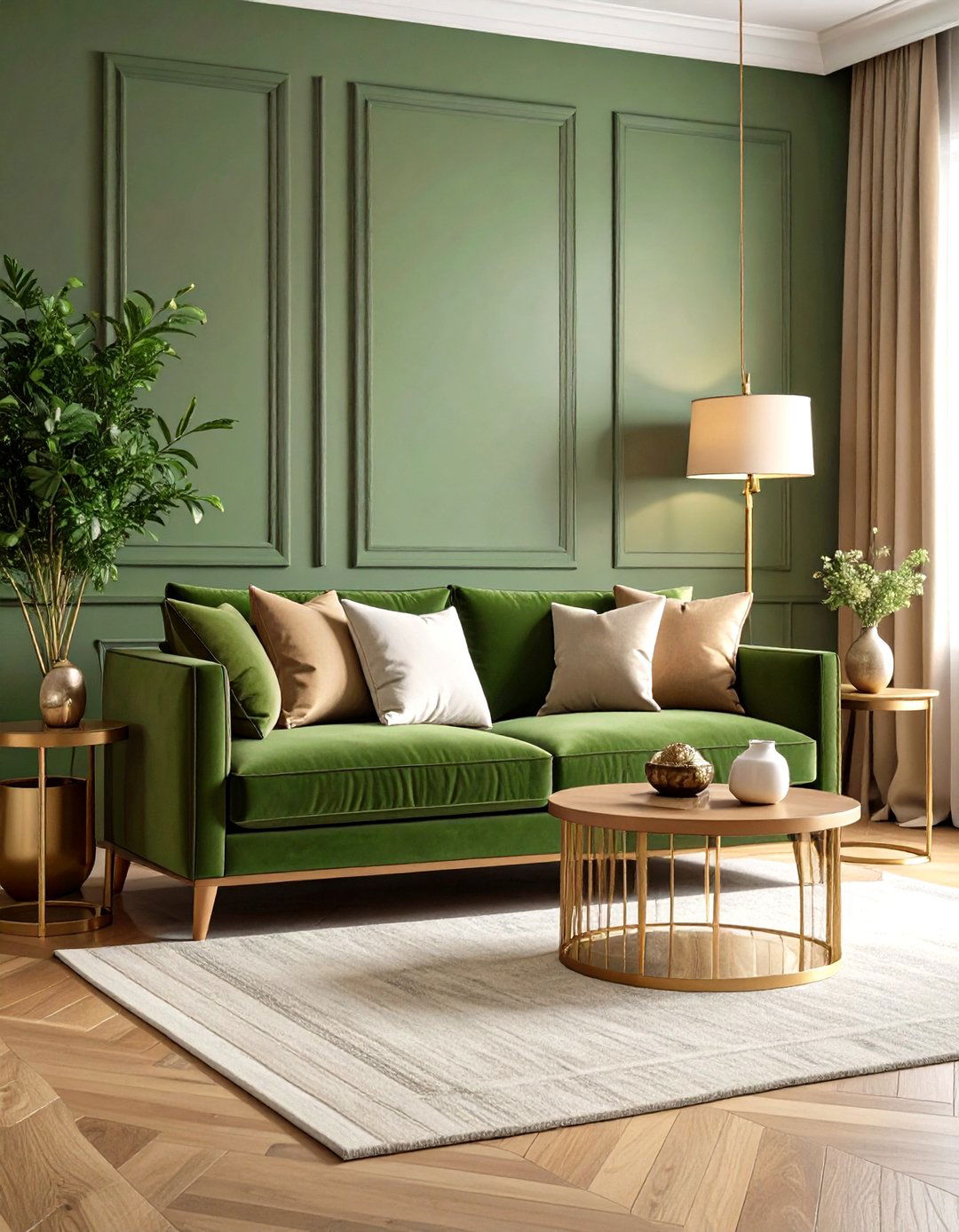
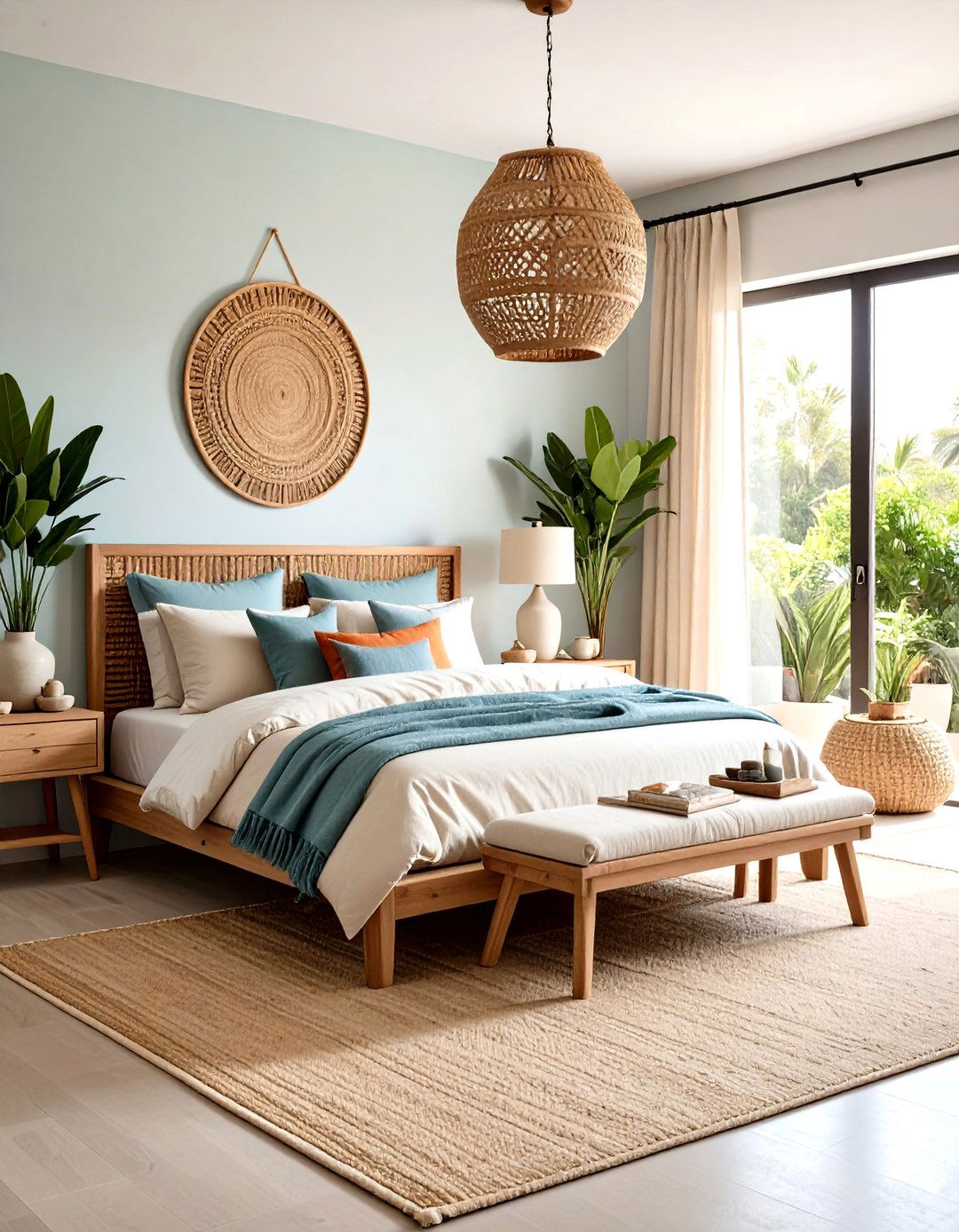



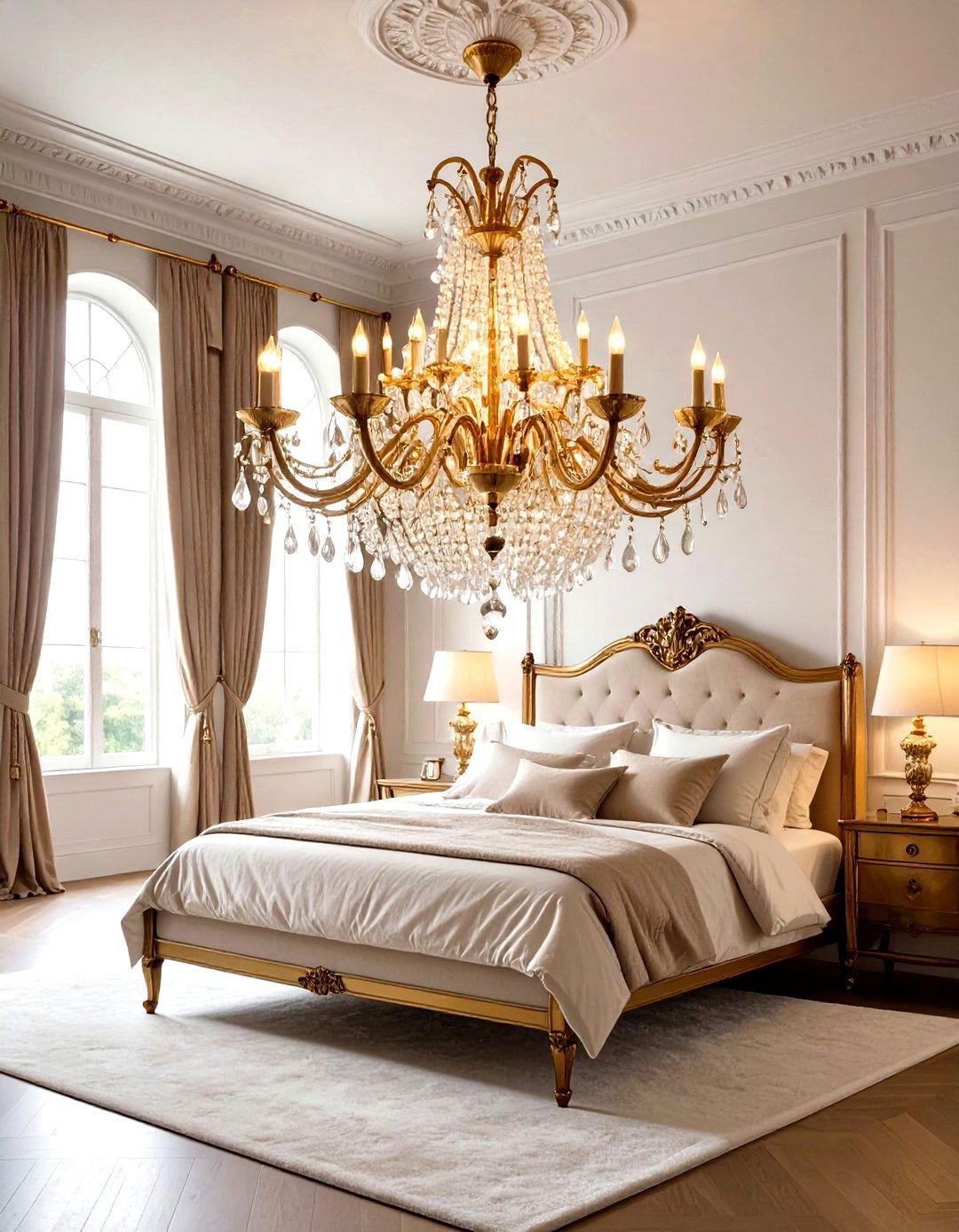
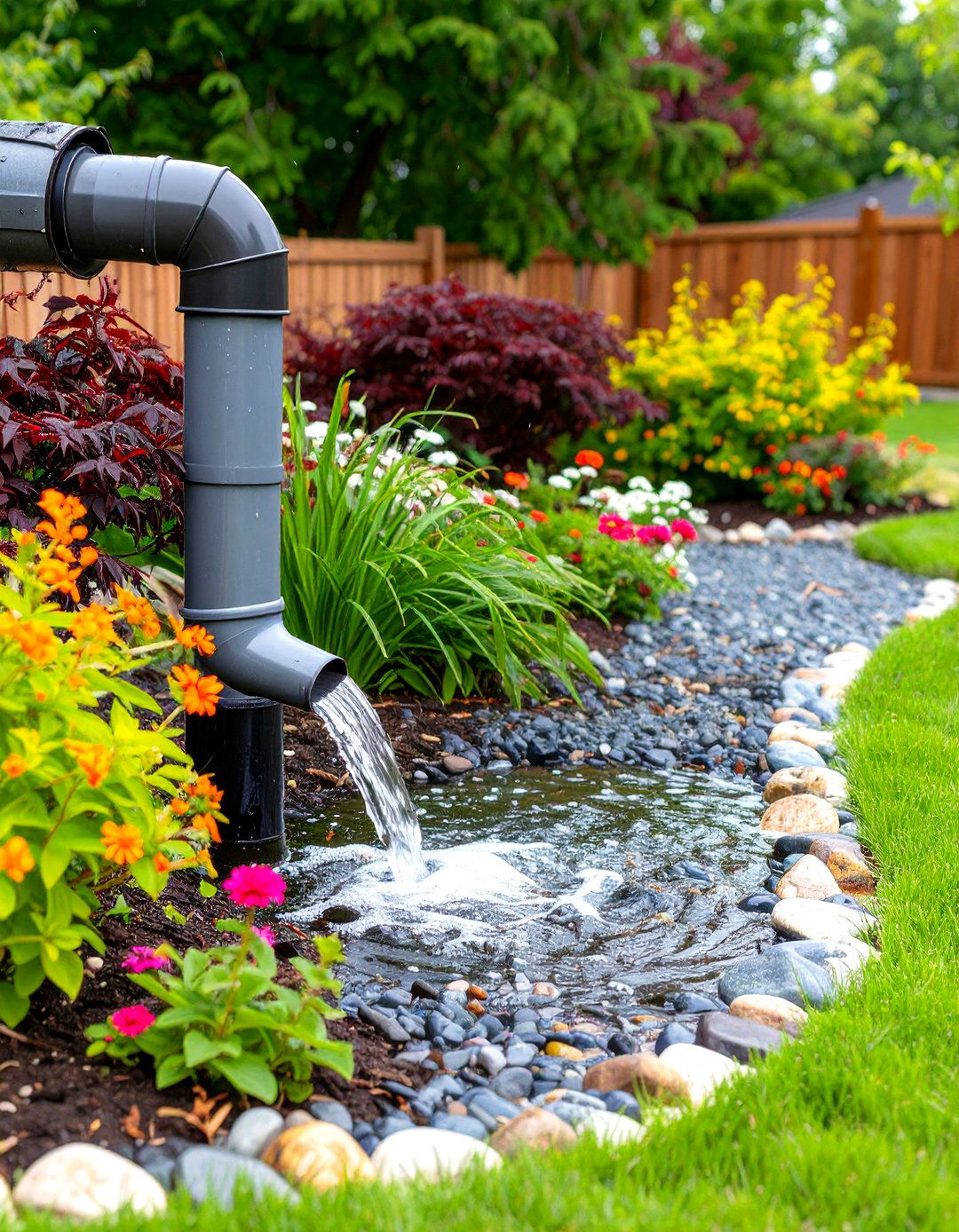
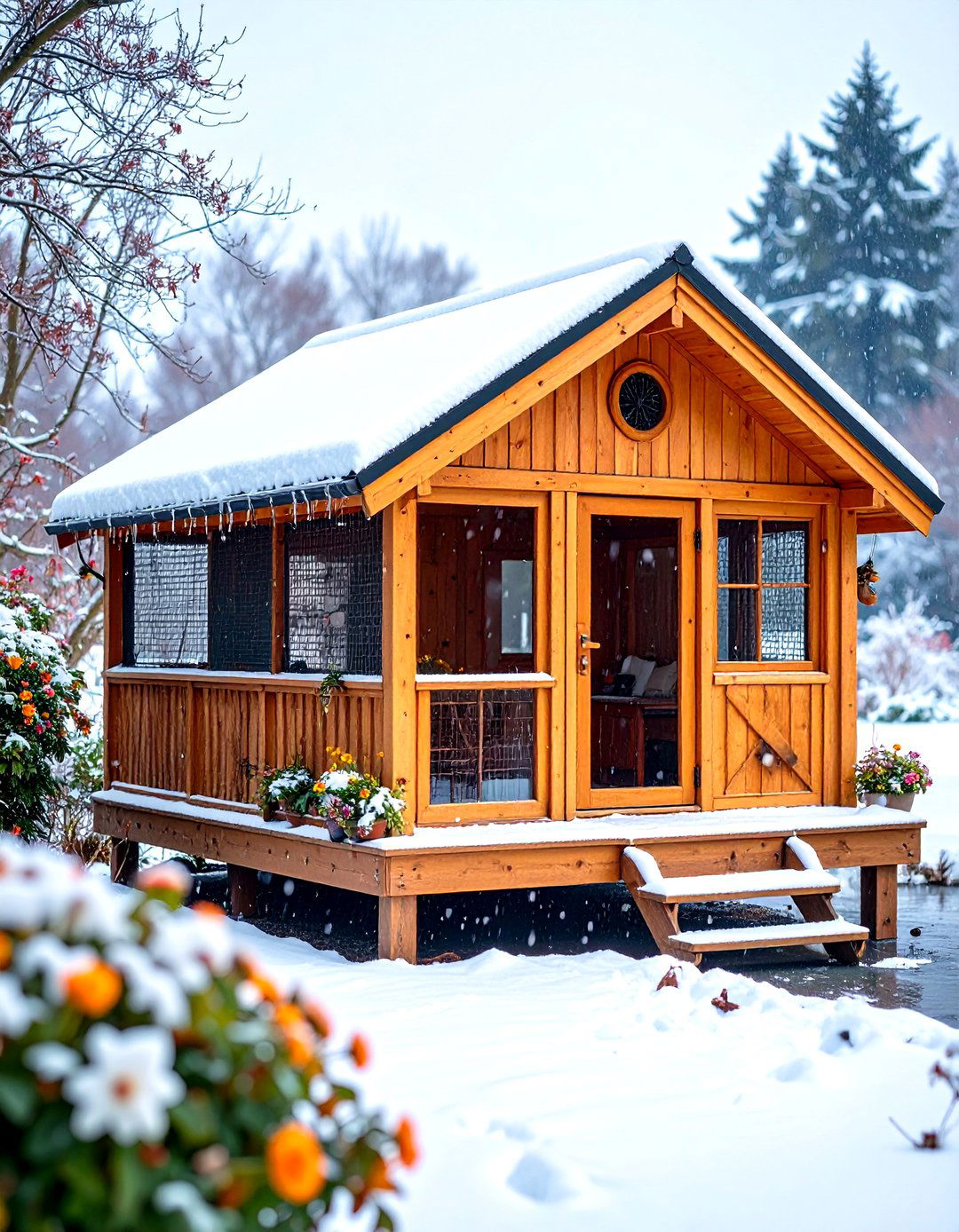
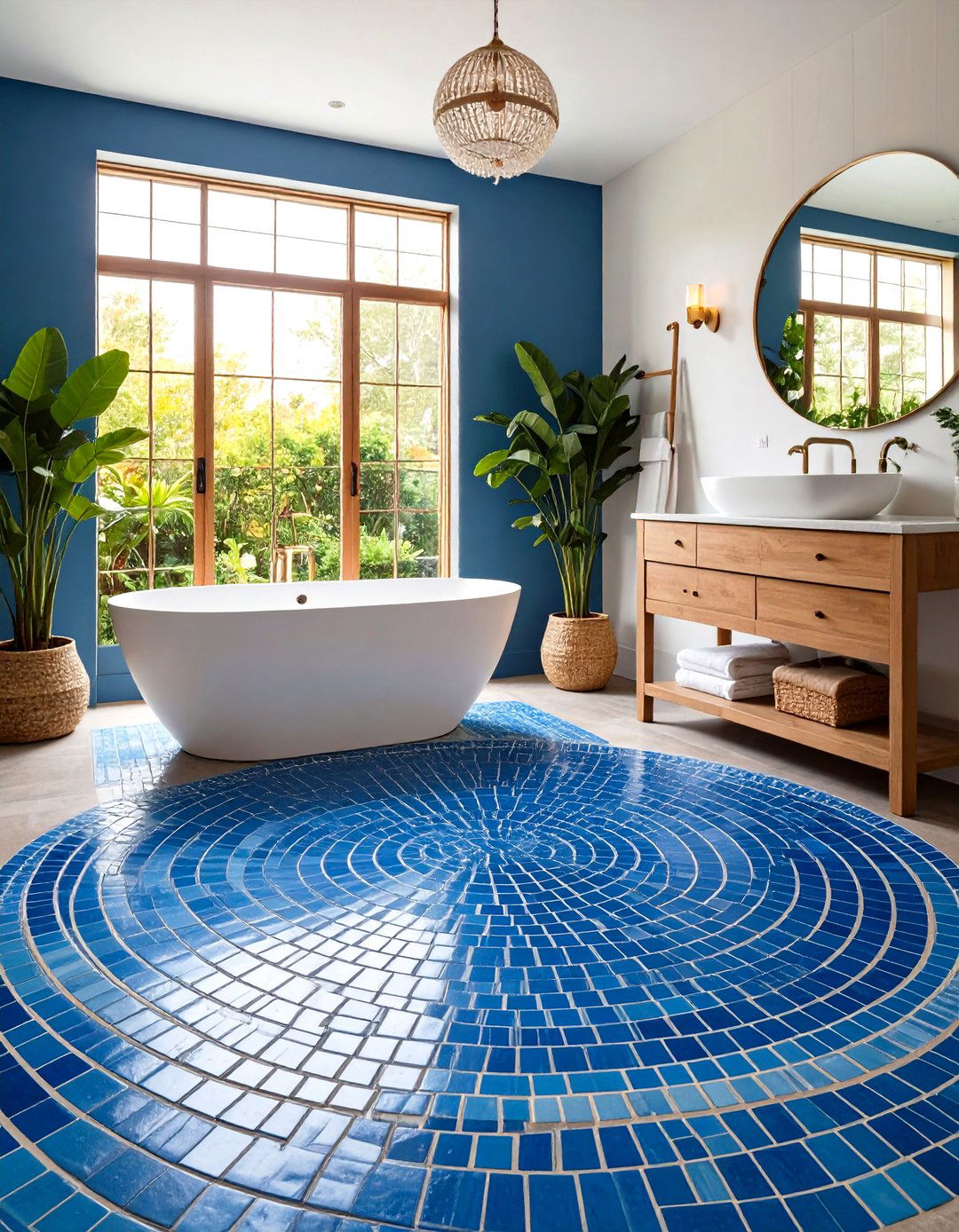
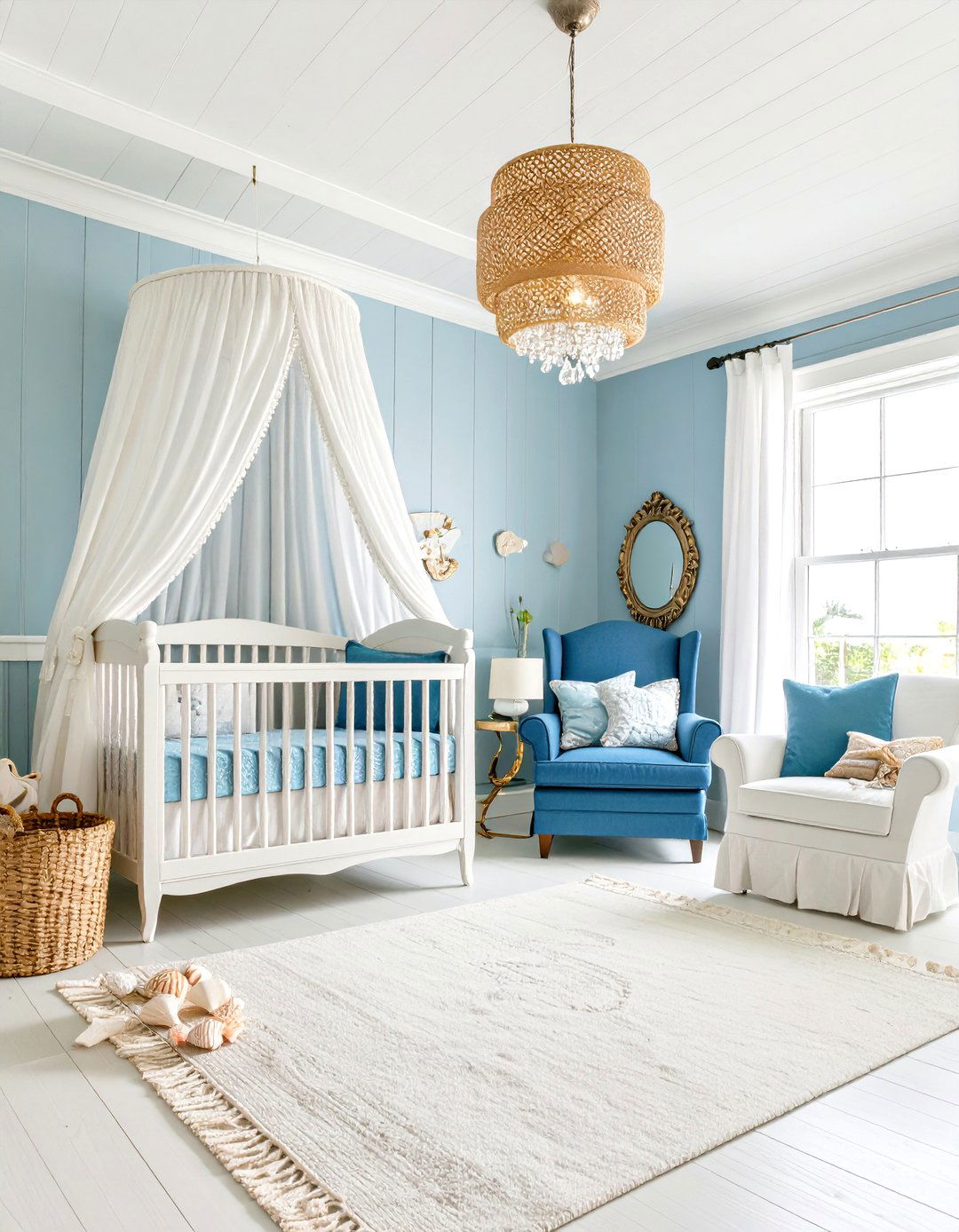
Leave a Reply